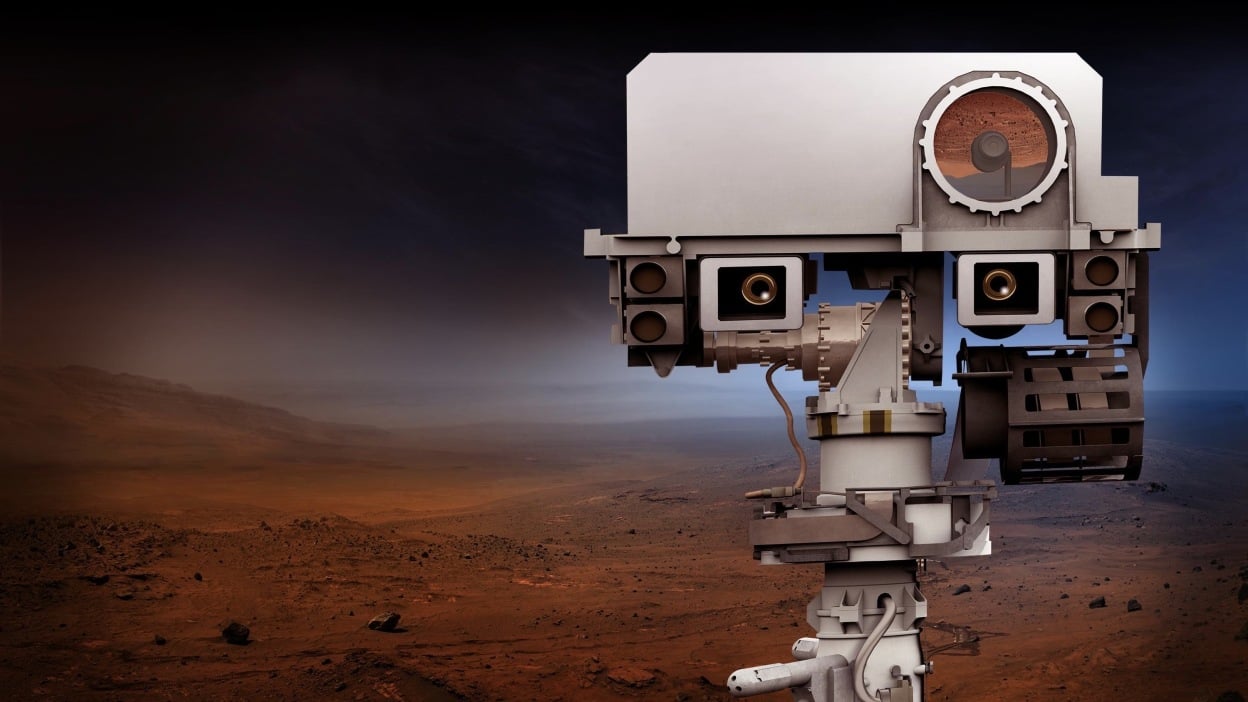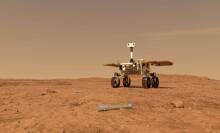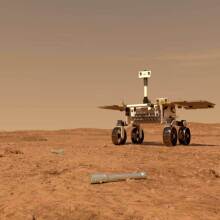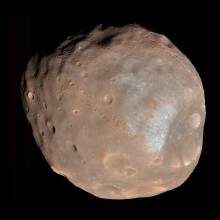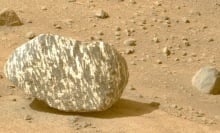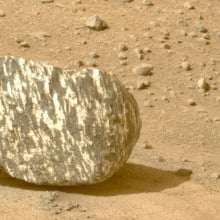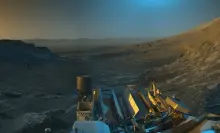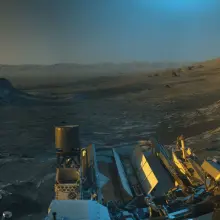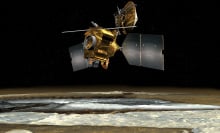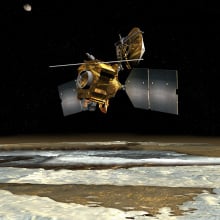This summer NASA's two car-sized labs exploring Mars each discovered rocks that neither mission had seen before, revealing a more diverse history for the planet than previously thought.
Three major findings happened within the span of seven weeks. The Curiosity rover, which has been climbing a mountain of layered rock, literally stumbled upon pure sulfur, its wheels crushing the material to expose a bed of yellow crystals. It turns out there was a whole beach-like field of these rocks about 55 yards wide.
In an entirely different region — a dried river channel — its twin, Perseverance, found a rock that scientists say has the most promising signs of ancient Martian life yet, though the sample would need to be shipped back to Earth for confirmation. This groundbreaking detection came shortly after Perseverance spotted a rare anorthosite boulder, which scientists believe could be a chunk of Mars' original crust.
Despite the two rovers being more than 2,000 miles apart on the Red Planet, their human stewards work within the same building in California. The teams are now sharing a renewed frenzy, scientists told Mashable: After two decades of traversing Mars with various robots, this pair of rovers — controlled from millions of miles away in space — is still uncovering new things to blow their socks off.
"We'd be running around the hallways all excited about the rocks we found, but then their operations team would say, 'Oh, but we found really cool rocks, too,'" Abigail Fraeman, deputy project scientist on the Curiosity mission, said. "It was just a really joyous summer for us all to be able to celebrate the successes of these missions and to continue to think forward to what we're going to see."
The exceptional summer discoveries have only mounted pressure on the U.S. space agency to solve the problems facing its proposed Mars Sample Return mission, an expensive and technologically complex plan to fly bits of rock, dust, and even air collected by Perseverance back to Earth.
The mission has been in limbo since a review found it would cost upward of $11 billion and take nearly two decades to achieve. NASA has since engaged the greater aerospace industry for input on how to wrangle in spending and development. Seven companies have suggested a variety of ideas, which Mashable has reported, including repurposing Artemis moon landers and rethinking the last leg of the journey. NASA hasn't yet announced its path forward.
Casey Dreier, senior space policy adviser for The Planetary Society, said he hopes the recent accomplishments on Mars will galvanize the political support to bring samples home.
"It's kind of a reminder that no one is going to care if it costs $6 billion or $11 billion if we discover evidence of life beyond Earth for the first time in human history," he told Mashable.
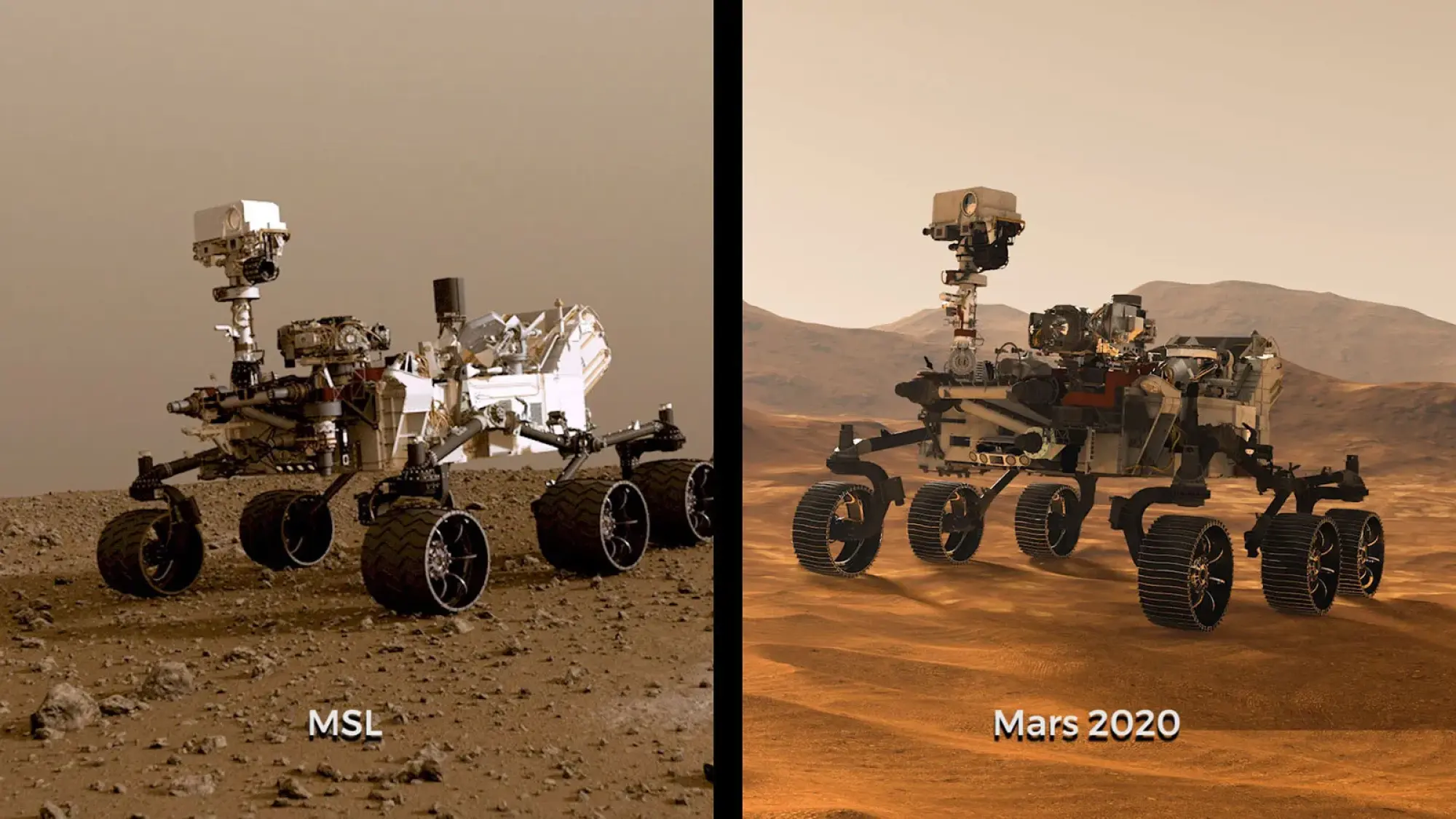
In almost any imaginable case, a rock sample would have to be brought back to Earth to conclude whether they had evidence of ancient Martians, said Katie Stack Morgan, a deputy project scientist for Perseverance. Based on what scientists know about the planet's history, it's unlikely that life, if there were any, evolved into multicellular organisms. Therefore, the rovers probably won't ever see something as obvious as a fossilized body part.
But life at the microbial scale does have the ability to leave a mark, albeit something more like a chemical residue than a literal footprint.
"If microbes were present on Mars, their signature left behind in the rock is probably more subtle," Stack Morgan said.
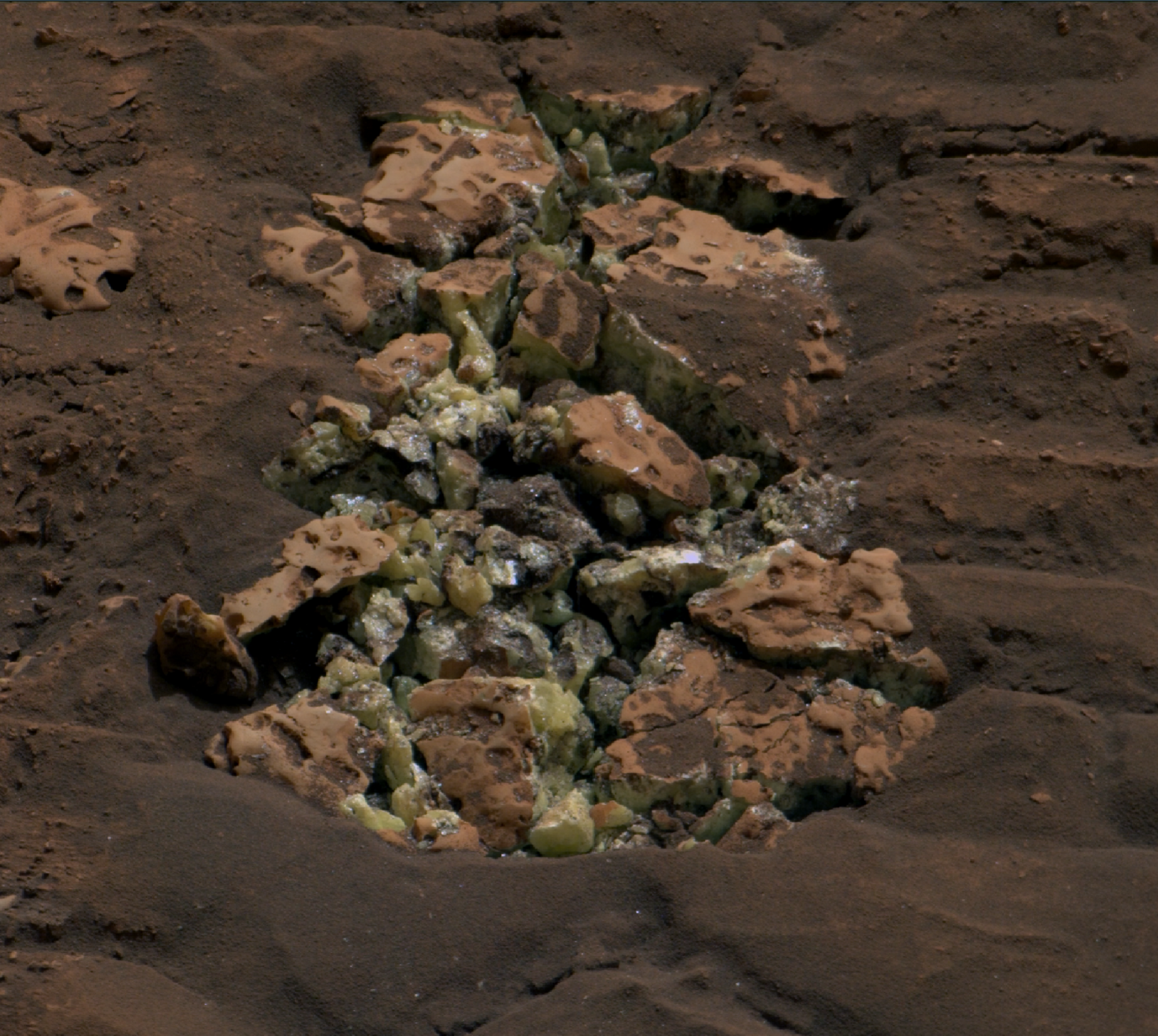
Curiosity's discovery of elemental sulfur
From the get-go, Curiosity has more limitations than Perseverance for finding evidence of life because it wasn't designed for that purpose. Instead, its instruments are tailored to detecting ingredients that life on Earth requires.
But it's still capable of making significant discoveries on the Red Planet. Finding pure sulfur on May 30, for instance, was a surprise that could have exciting implications. In Gale Crater, where the rover has been exploring, Curiosity is surrounded by plenty of sulfates — that is, rocks that contain sulfur combined with other materials.
"It's kind of a reminder that no one is going to care if it costs $6 billion or $11 billion if we discover evidence of life beyond Earth for the first time in human history."
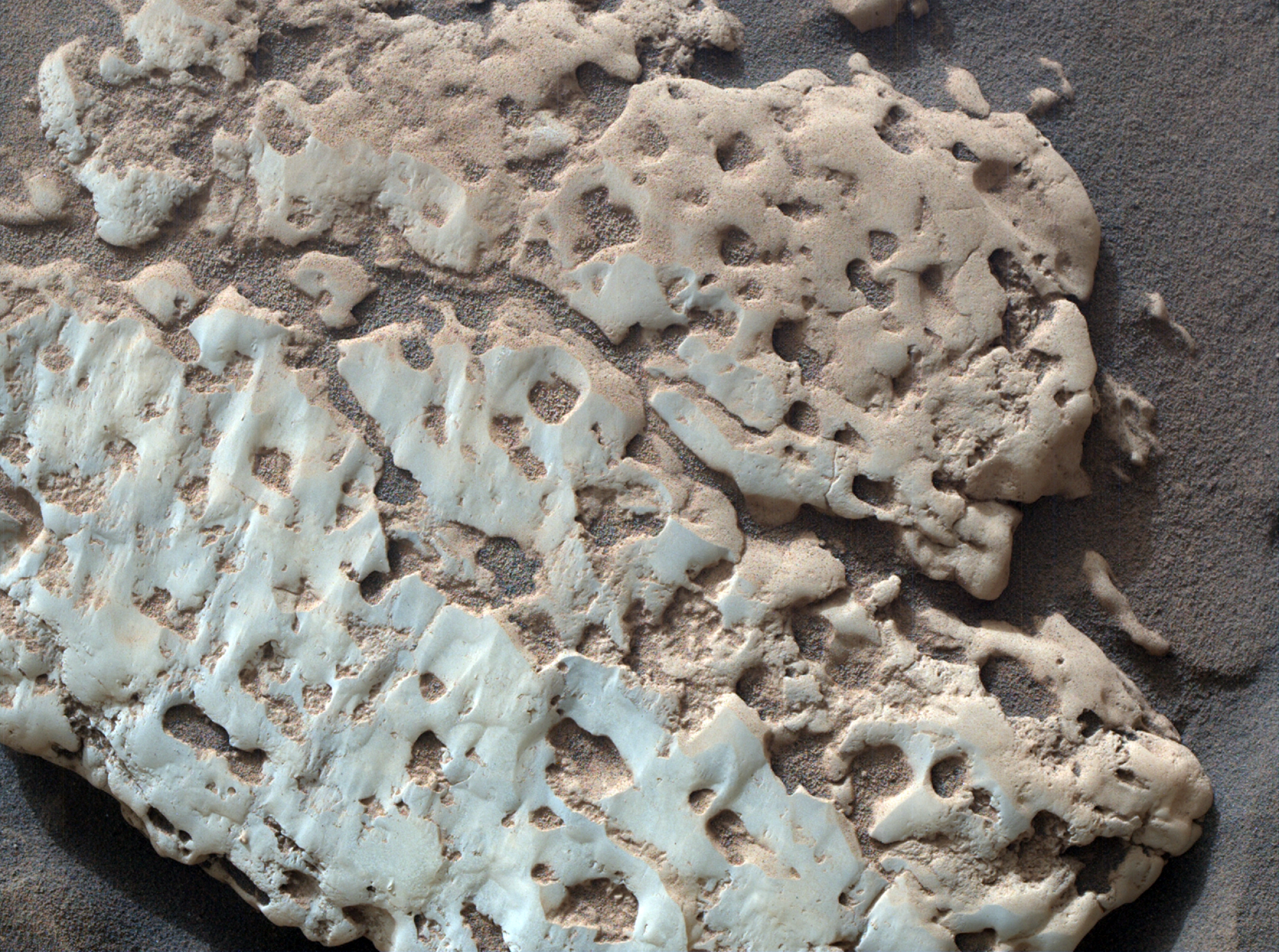
But unadulterated sulfur is special. When it is made naturally on Earth, the element is usually associated with superheated volcanic gasses and hot springs. Another way it can form is through interactions with bacteria, though Fraeman emphasizes that what Curiosity found could have formed through a non-biological process.
Still, Fraeman, who got the honor of naming the crushed yellow crystals Convict Lake after a landmark in the Sierra Nevada mountains, said the discovery is a brainteaser for scientists because those rocks don't seem like they should be there.
"We don't think we're anywhere near a volcano where the rover is, so that is a puzzling feature to find in this particular location," she said.
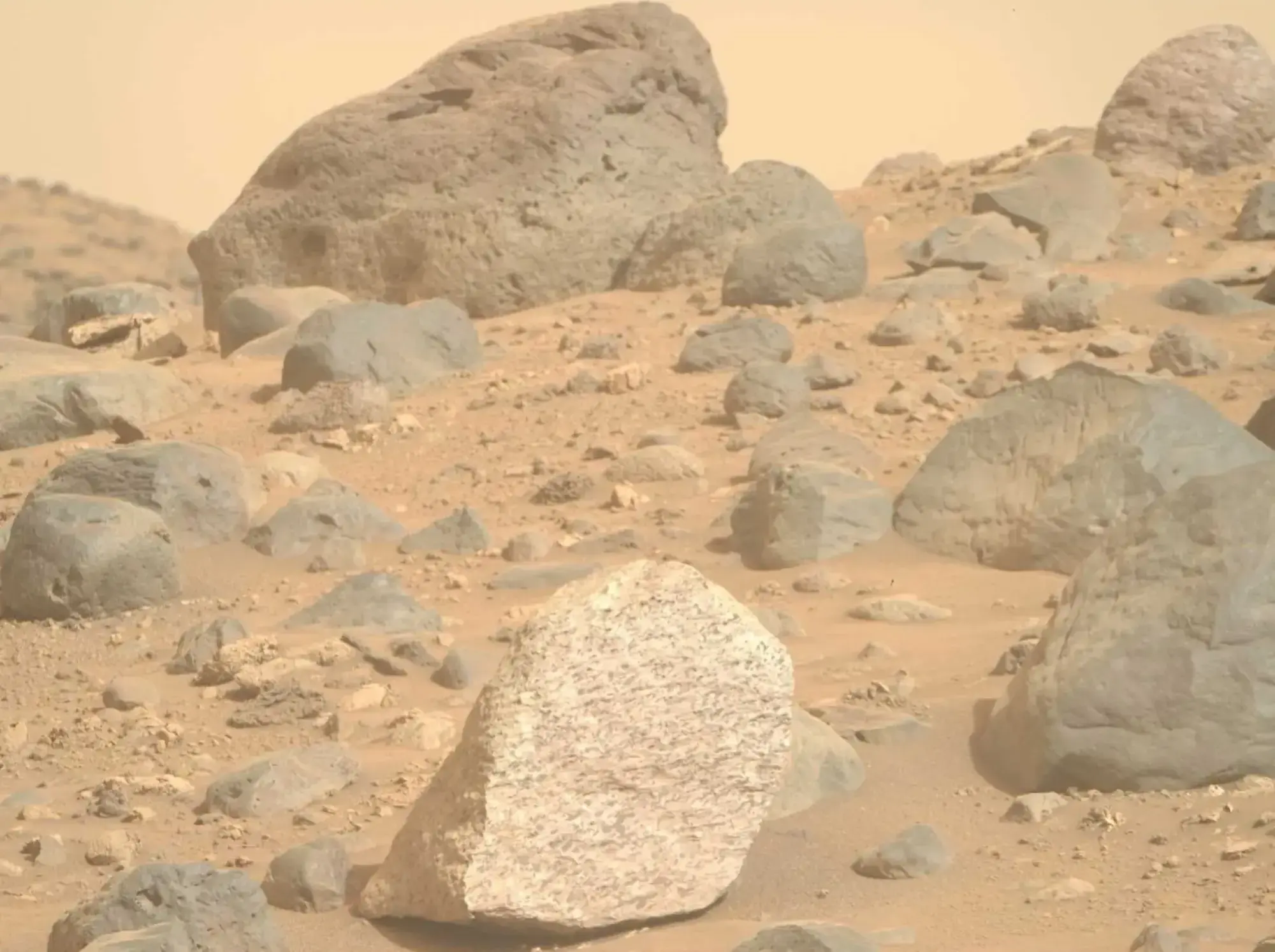
Perseverance's discovery of an anorthosite boulder
Just three days earlier on May 27, Perseverance found a light speckled boulder about 18 inches wide and 14 inches tall in Jezero Crater. The rover team named it Atoko Point after a landmark in the Grand Canyon.
Though such anorthosite rocks are on the moon and in mountain ranges on Earth, they're generally considered rare in the solar system. True Martian examples have eluded researchers up until now, including within our inventory of Red Planet meteorites.
Anorthosites are primarily made of feldspar, a mineral linked to lava flows. Some scientists think the rock may have formed in magma below ground and was later blasted to the surface by a giant impact. Others think it could have formed somewhere else on the planet and was carried to its location by a gushing ancient river.
This discovery could bolster the idea that Mars' early crust was more complex than once thought — and perhaps similar to Earth's original crust. Understanding the ancient Martian surface also could help unlock secrets about the evolution of Earth and how life emerged here.
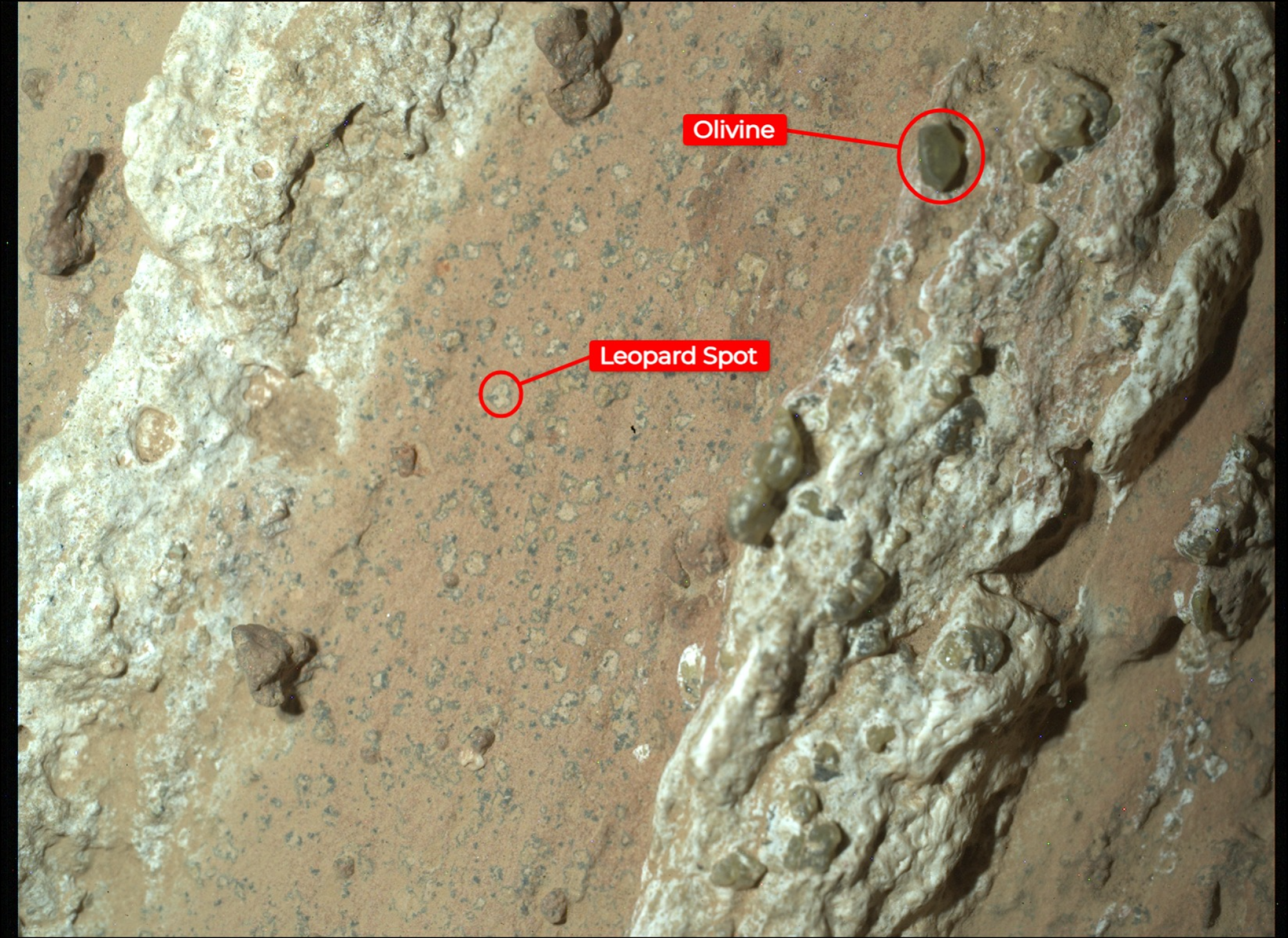
Perseverance's discovery of a potential biosignature
Regardless of the rovers' extraordinary finds in the early part of the summer, they were vastly eclipsed by a veiny, leopard-spotted rock found in mid-July. Though NASA stopped short of claiming Perseverance had found evidence of past Martian life, the rover's instruments detected organics within the rock that are, at the least, building blocks for life in this world.
Dubbed Cheyava Falls, the arrowhead-shaped rock, measuring about three feet by two feet, also bears signs of water having run through it and a potential source of nutrients: The rock's spots were caused by a type of chemical reaction that can yield different minerals. On Earth, microbes can feed off those chemical reactions and sometimes even cause them to occur.
Though Cheyava Falls' splotches could have formed in non-biological ways, they are usually linked to subsurface microbes from long ago when they are found on Earth.
Perseverance scientists say they've exhausted what they can learn about the rock with the instruments on the rover. Back home, researchers could use advanced tools to search for complex organic molecules, DNA, cell structures, and beyond to determine whether it indeed contains evidence of past Martian life.
But without a sample return mission, scientists say it's unlikely they'll get beyond where they are today in their understanding of the Red Planet's past habitability: At one point, it had conditions for life to emerge. So did it?
"It's like we know all the ingredients to make the cookies are out on the table," Fraeman said, "And the question is do we actually have the cookies baked?"
Topics NASA
